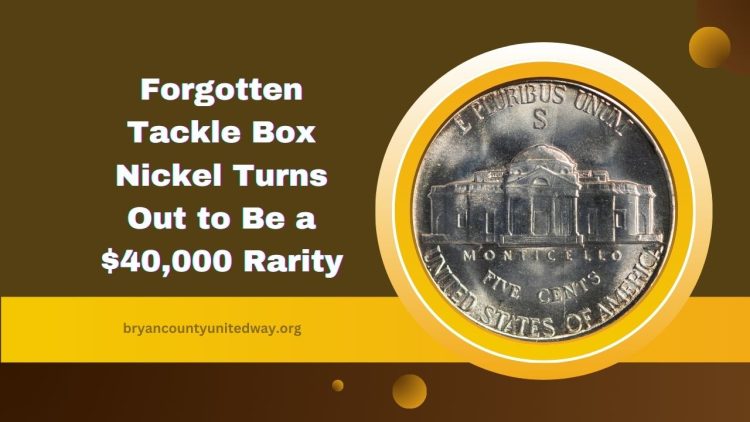What appeared to be just another old coin tucked away in a dusty tackle box has turned into a stunning, once-in-a-lifetime revelation. A rare Jefferson nickel, overlooked for years among fishing gear, recently sold for an astonishing $40,000 at a global auction—captivating collectors and reigniting interest in everyday coins hiding in plain sight.
A Chance Discovery with Big Rewards
The coin was discovered by a hobbyist who had purchased a box of assorted items at a local yard sale. While rummaging through the old tackle box filled with fishing lures and receipts, they stumbled upon a seemingly average Jefferson nickel.
On closer inspection, the coin displayed several unusual characteristics—prompting a deeper look into its origins and worth.
Experts later identified the coin as a 1942 Jefferson War Nickel, produced during the WWII era. What made this piece exceptional was a combination of its rare minting error, outstanding condition, and clearly defined Monticello steps—a highly sought-after trait among numismatists.
What Made This Coin So Valuable?
The Jefferson nickel’s value was boosted by a combination of its rarity, metal composition, and visual quality:
- Wartime Alloy: In 1942, due to metal shortages, the U.S. Mint altered the composition of the nickel to 35% silver, 56% copper, and 9% manganese—a defining feature of war nickels.
- Distinctive Mint Mark: A large “P” mint mark placed above Monticello on the coin’s reverse distinguishes these wartime issues.
- Mint Error: The coin bore a rare die flaw, increasing its desirability and value.
- “Full Steps” Quality: Sharp, visible lines on the steps of Monticello indicated a strong strike, further enhancing the coin’s appeal.
- Preservation: Virtually no signs of wear meant this coin ranked as high-grade and near-pristine.
Auction and Outcome
Once submitted to a major auction house, the coin immediately caught the attention of top collectors. A competitive bidding war followed, with the coin ultimately fetching a remarkable $40,000, exceeding all expectations.
The buzz surrounding this sale reminded the public that hidden treasures can often be found in unexpected places, such as junk drawers, inherited boxes, and yes—even old tackle boxes.
Breakdown of the Jefferson Nickel’s Auction Profile
| Feature | Details |
|---|---|
| Coin Type | Jefferson Nickel |
| Year | 1942 |
| Mint Mark | “P” above Monticello |
| Composition | 35% Silver, 56% Copper, 9% Manganese |
| Condition | Extremely Fine – “Full Steps” |
| Special Feature | Rare minting error |
| Final Sale Price | $40,000 |
Why You Should Take a Closer Look at Your Change
This incredible sale demonstrates that valuable coins may be sitting unnoticed in everyday places. Coins from the 1900s, particularly those with mint errors, low mintages, or unique metal compositions, can be worth far more than their face value.
Whether found in circulation, inherited collections, or overlooked containers, rare dimes, nickels, and quarters continue to surprise collectors and everyday individuals alike.
This Jefferson nickel stands as a reminder: even the most ordinary-looking coin can turn into an unexpected windfall. Before discarding or spending your spare change, give it a second look—you might be holding a fortune.
FAQs
What is a War Nickel and why is it significant?
War Nickels, minted from 1942–1945, used silver instead of nickel due to wartime shortages, making them both historic and collectible.
What does “Full Steps” mean on a Jefferson nickel?
“Full Steps” refers to the detailed, uninterrupted steps on Monticello visible on the coin’s reverse—an indicator of superior strike quality.
Are all 1942 nickels worth money?
No, only select versions—those made with silver, featuring specific mint marks, showing mint errors, or in excellent condition—have high market value.
